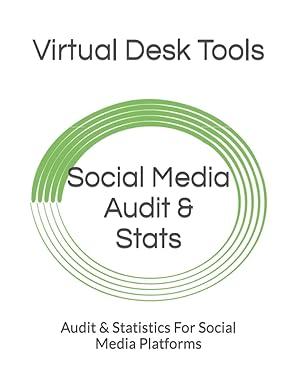Question
-A company purchases merchandise for $24,000. The seller also offers credit terms of 2/10, n/30. Assuming no returns were made and that payment was made
-A company purchases merchandise for $24,000. The seller also offers credit terms of 2/10, n/30. Assuming no returns were made and that payment was made within the discount period, what is the net cost of the merchandise?
Multiple Choice
-
$24,000.
-
$23,520.
-
$2,400.
-
$16,800.
-
$7,700.
Cost of goods sold:
Multiple Choice
-
Is another term for merchandise sales.
-
Is the term used for the expense of buying and preparing merchandise for sale.
-
Is another term for revenue.
-
Is also called gross margin.
-
Is a term only used by service firms.
- A company purchases merchandise for $20,000. The seller also offers credit terms of 2/10, n/30. Assuming no returns were made and that payment was made within the discount period, what is the net cost of the merchandise?
Multiple Choice
-
$20,000.
-
$19,600.
-
$2,000.
-
$14,000.
-
$6,500.
-Garza Company had sales of $147,000, sales discounts of $2,200, and sales returns of $3,530. Garza Company's net sales equals:
Multiple Choice
-
$5,730.
-
$141,270.
-
$144,800.
-
$147,000.
-
$152,730.
- Goods on consignment are:
Multiple Choice
-
Goods sent by the owner to the consignee who sells the goods for the owner.
-
Reported in the consignee's books as inventory.
-
Goods shipped to the consignor who sells the goods for the owner.
-
Not reported in the consignor's inventory since they do not have possession of the inventory.
-
Always paid for by the consignee when they take possession.
- The credit terms 2/10, n/30 are interpreted as:
Multiple Choice
-
2% cash discount if the amount is paid within 10 days, or the full balance due in 30 days.
-
10% cash discount if the amount is paid within 2 days, or the full balance due in 30 days.
-
30% discount if paid within 2 days.
-
30% discount if paid within 10 days.
-
2% discount if paid within 30 days.
- Sandoval needs to determine its year-end inventory. The warehouse contains 20,000 units, of which 3,000 were damaged by flood and are not sellable. Another 2,000 units were purchased from Markor Company, FOB shipping point, and are currently in transit. The company also consigns goods and has 4,000 units at a consignee's location. How many units should Sandoval include in its year-end inventory?
Multiple Choice
-
29,000
-
21,000
-
23,000
-
19,000
-
26,000
11.) Prentice Company had cash sales of $94,275, credit sales of $83,450, sales returns and allowances of $1,700, and sales discounts of $3,475. Prentice's net sales for this period equal:
Multiple Choice
-
$94,275.
-
$172,550.
-
$174,250.
-
$176,025.
-
$177,725.
-Havermill Co. establishes a $400 petty cash fund on September 1. On September 30, the fund is replenished. The accumulated receipts on that date represent $88 for Office Supplies, $167 for merchandise inventory, and $37 for miscellaneous expenses. The fund has a balance of $108. On October 1, the accountant determines that the fund should be increased by $80. The journal entry to record the establishment of the fund on September 1 is:
Multiple Choice
-
Debit Cash $400; credit Petty Cash $400.
-
Debit Petty Cash $400; credit Accounts Payable $400.
-
Debit Miscellaneous Expense $400; credit Cash $400.
-
Debit Petty Cash $400; credit Cash $400.
-
Debit Cash $400; credit Accounts Payable $400.
- The custodian of a $450 petty cash fund discovers that the fund has $55.50 in coins and currency plus $390.00 in receipts at the end of the month. The entry to replenish the petty cash fund will include:
Multiple Choice
-
A credit to Cash Over and Short for $4.50.
-
A debit to Petty Cash for $390.00.
-
A debit to Cash for $394.50.
-
A credit to Cash for $394.50.
-
A debit to Cash for $385.50.
-Pelcher Co. maintains a $400 petty cash fund. On January 31, the fund is replenished. The accumulated receipts on that date represent $110 for office supplies, $140 for merchandise inventory, and $70 for miscellaneous expenses. There is a cash overage of $4. The journal entry to replenish the fund on January 31 is:
Multiple Choice
-
Dr. Office Supplies Expense, $110; Dr. Merchandise inventory, $140; Dr. Miscellaneous expenses, $70; Dr. Cash over and short, $4; Cr. Petty cash, $324.
-
Dr. Office Supplies Expense, $110; Dr. Merchandise inventory, $140; Dr. Miscellaneous expenses, $70; Dr. Cash over and short, $4; Cr. Cash, $324.
-
Dr. Office Supplies Expense, $110; Dr. Merchandise inventory, $140; Dr. Miscellaneous expenses, $70; Cr. Cash over and short, $4; Cr. Petty cash, $316.
-
Dr. Office Supplies Expense, $110; Dr. Merchandise inventory, $140; Dr. Miscellaneous expenses, $70; Cr. Cash over and short, $4; Cr. Cash, $316.
-
Dr. Office Supplies Expense, $110; Dr. Merchandise inventory, $140; Dr. Miscellaneous expenses, $70; Dr. Cash over and short, $4; Cr. Petty cash, $400.
- Meng Co. maintains a $300 petty cash fund. On January 31, the fund is replenished. The accumulated receipts on that date represent $80 for office supplies, $160 for merchandise inventory, and $20 for miscellaneous expenses. There is a cash shortage of $8. Based on this information, the amount of cash in the fund before the replenishment is:
Multiple Choice
-
$300.
-
$260.
-
$40.
-
$48.
-
$32.
Step by Step Solution
There are 3 Steps involved in it
Step: 1

Get Instant Access to Expert-Tailored Solutions
See step-by-step solutions with expert insights and AI powered tools for academic success
Step: 2

Step: 3

Ace Your Homework with AI
Get the answers you need in no time with our AI-driven, step-by-step assistance
Get Started


